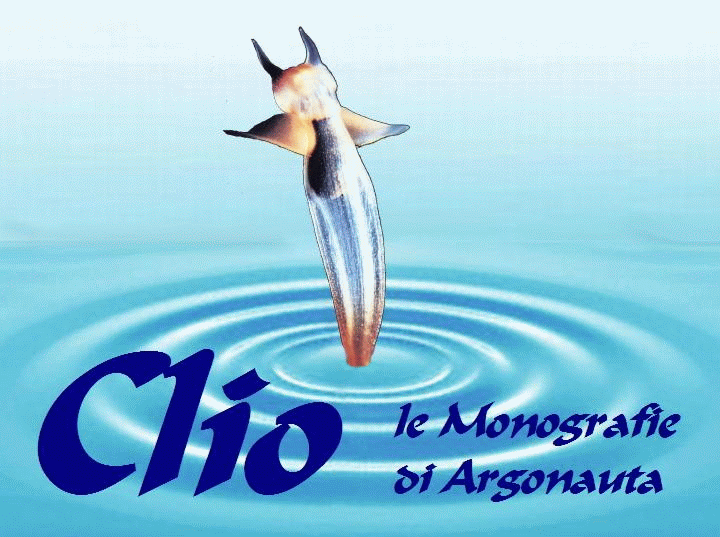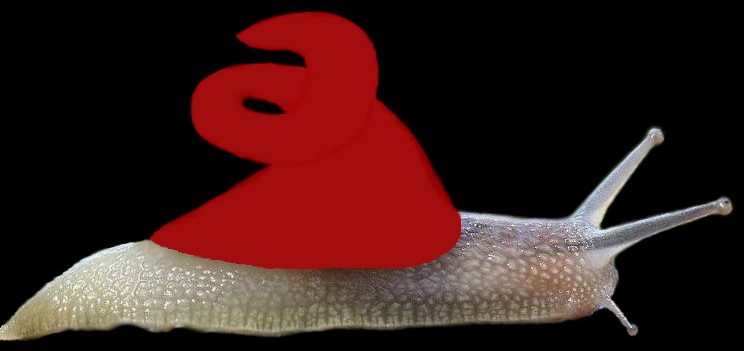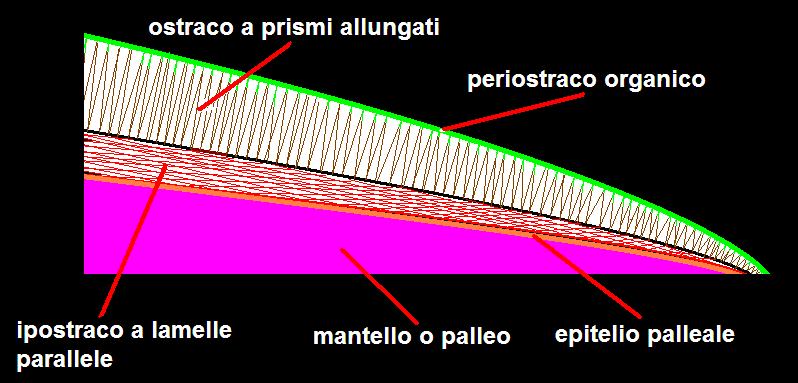
Clio supplemento a Argonauta n. 7-12 2011
 |
 |

Come fa il mollusco a costruire la conchiglia?
How does the mollusk to build the shell?
La Conchiolina
In questa immagine abbiamo preso la foto di una comune lumaca e l'abbiamo ritoccata per togliere la conchiglia e spiegarti meglio l'anatomia del mollusco. Il corpo del mollusco è costituito dal piede (tutto quello della foto vera) che è un organo muscolare utilizzato per la locomozione. In molti molluschi si distingue, nella parte anteriore, il capo provvisto di due o quattro antenne recanti, alla base o alla sommità, gli occhi. Il sacco dei visceri (quello disegnato in rosso sopra al mantello) è rivestito da uno strato di epidermide chiamato "mantello" che provvede alla "costruzione" della conchiglia, questa è formata essenzialmente da carbonato di calcio. Gli "ioni " di calcio vengono prelevati dall'ambiente esterno: acqua, terreno, cibo e trasferiti, tramite la circolazione del sangue, nel mantello. Da qui al "liquido extrapalleale" situato nello spazio tra mantello e conchiglia. Si forma così il carbonato di calcio che viene inglobato dalla "conchiolina", anche lei una sostanza organica secreta dal mantello, che forma una specie di reticolo. Il carbonato di calcio può cristallizzare in varie forme e, tra queste, la Calcite (cristalli romboedrici, scalenoedrici o a forma prismatica) e l'Aragonite (cristalli prismatici allungati). |
The ConchiolinIn this picture we took the photo of a common snail and we retouched to remove the shell and better explain the anathomy of the mollusc.The body of the mollusc is constituted by the foot (all of the real picture) which is a muscular organ used for locomotion. In many molluscs is distinguished, in the front part, the head provided with two or four antennas bearing, at the bottom or top, the eyes. The sack of the viscera (one drawn in red on the mantle) is coated with a layer of epidermis called "mantle" which provides the "construction" of the shell, this is formed essentially of calcium carbonate. The "ions" of calcium are taken from the environment: water, soil, food, and transferred, via the blood circulation in the mantle. From here to the "liquid extrapalleale" located in the space between the mantle and shell. Is thus formed calcium carbonate which is encompassed by the "conchiolina", also this an organic substance secreted by the mantle, which forms a kind of grating. The calcium carbonate may crystallize in various forms and, among these, the Calcite (rhombohedral crystals, scalenoedric or prismatic) and the aragonite (elongated prismatic crystals). |

|
La conchiglia è normalmente composta da uno strato esterno, in genere organico e chitinoso, detto "periostraco"; uno strato intermedio detto "ostraco" cosituito da cristalli di calcite, raramente anche aragonite, disposti perpendicolarmente alla superficie esterna, e da uno strato interno detto "ipostraco", dall'aspetto spesso lucente e madreperlaceo, costituito da aragonite disposta a lamelle, parallele alla superficie della conchiglia, disposte una sull'altra e variamente incrociate e fuse tra di loro.
|
The shell is usually composed of an outer layer, usually organic and chitinous, said "periostracum"; an intermediate layer called "ostracum" take the form of crystals of calcite, aragonite also rarely, arranged perpendicularly to the outer surface, and an inner layer of said "ipostracum" looking often shiny and pearly, consisting of aragonite prepared to strip, parallel to the surface of the shell, arranged one over the other and variously crossed and fused between them.
|
